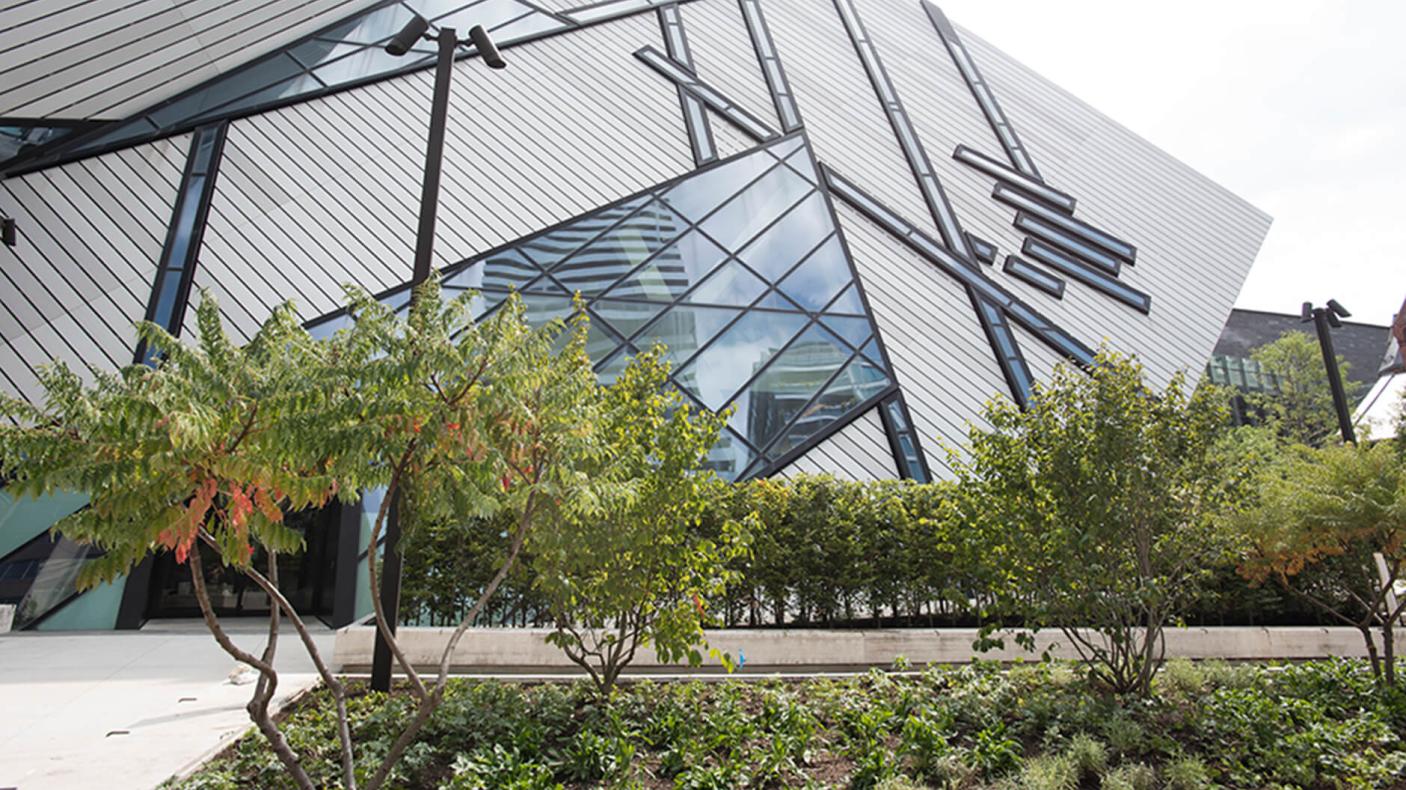From Bare Pavement to Native Plants
The ROM’s Plaza Gardens bring a buzzing green space to Bloor Street.
It has only been a year since the ROM
It has only been a year since the ROM unveiled the Reid Family Plaza and the Helga & Mike Schmidt Performance Terrace. In that time these appealing spaces adjacent to the Bloor Street entrance have successfully extended the Museum onto its streetscape, where they are regularly enjoyed by Museum visitors and pedestrians as outdoor meeting places, performance spaces, lunch spots, and destinations for soaking up the sun. They have fulfilled another objective too—to enhance our urban green space and promote biodiversity in the city. To accomplish this goal, the raised garden beds on the Plaza were planted with a palate of perennial plant species that are native to Ontario. Native plants are important to pollinators, especially in an urban environment where plants of any kind can be scarce. Some are food plants for butterfly and moth caterpillars.
But you may ask, on the corner of Avenue Road and Bloor Street? Surely it is too hot, dry and polluted to grow native plants there. In fact, it is not. The Plaza garden beds were specially built with irrigation systems and filled with fertile soil. Plants were selected that can thrive in the harsh conditions created by wind, heat reflected from the building and the pavement, and oscillation from shade to blasting sun at different times of day, and different seasons of the year.
Native plants can be incredibly tough and by picking those that grow under similar conditions in the wild, it is possible to find some that will thrive. A garden is always a work in progress—it takes more than one season for the plants to become established, and to work out the fine balance of irrigation. This year, we discovered that Canada anemone was not well-suited to the environment on the Plaza so it has been removed. We will keep tweaking until the balance of species is just right.
We have also seen an abundance of butterflies, from Cabbage Whites to Monarchs and more. The pearly everlasting hosted caterpillars of the American Lady butterfly. When its flowers first bloomed in early summer, the buds were covered in caterpillars, but the plant didn’t die. Once the caterpillars had moved on, the plant came into full bloom and butterflies then came to feed on its nectar.
Gallery 1
We marked the Plaza’s first birthday
We marked the Plaza’s first birthday this August by finding two insect visitors on a single obedient plant. A bee followed the nectar guide on the throat of the flower and buried itself inside, while a praying mantis sat camouflaged on the flower spike, head down waiting for some lunch! I am sure there were many, many more. If you plant for them, they will come.
Gallery 2
As winter approaches the plants
As winter approaches the plants on the plaza beds are moving toward winter dormancy. Some, like the Christmas fern and the bearberry, will stay green all winter while others will die back below ground. If you happen to be in the neighborhood in November, look for the flowers on the witch hazel shrubs. This species is one of the last to bloom every season, with small yellow flowers covering its branches.
Deborah Metsger
Deborah Metsger is Assistant Curator of Botany at the ROM.






